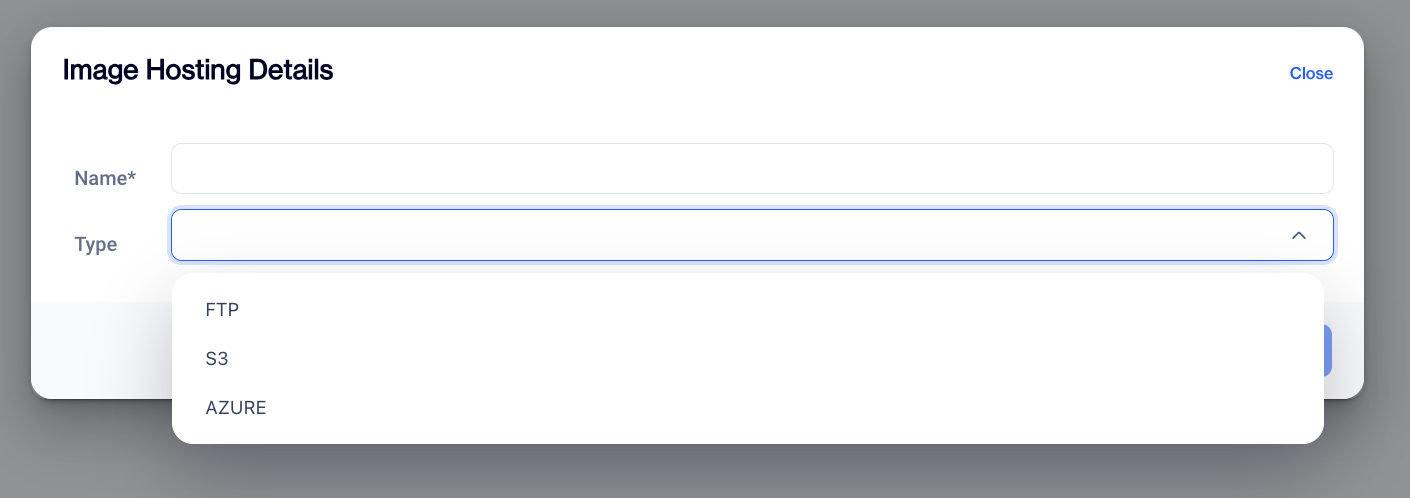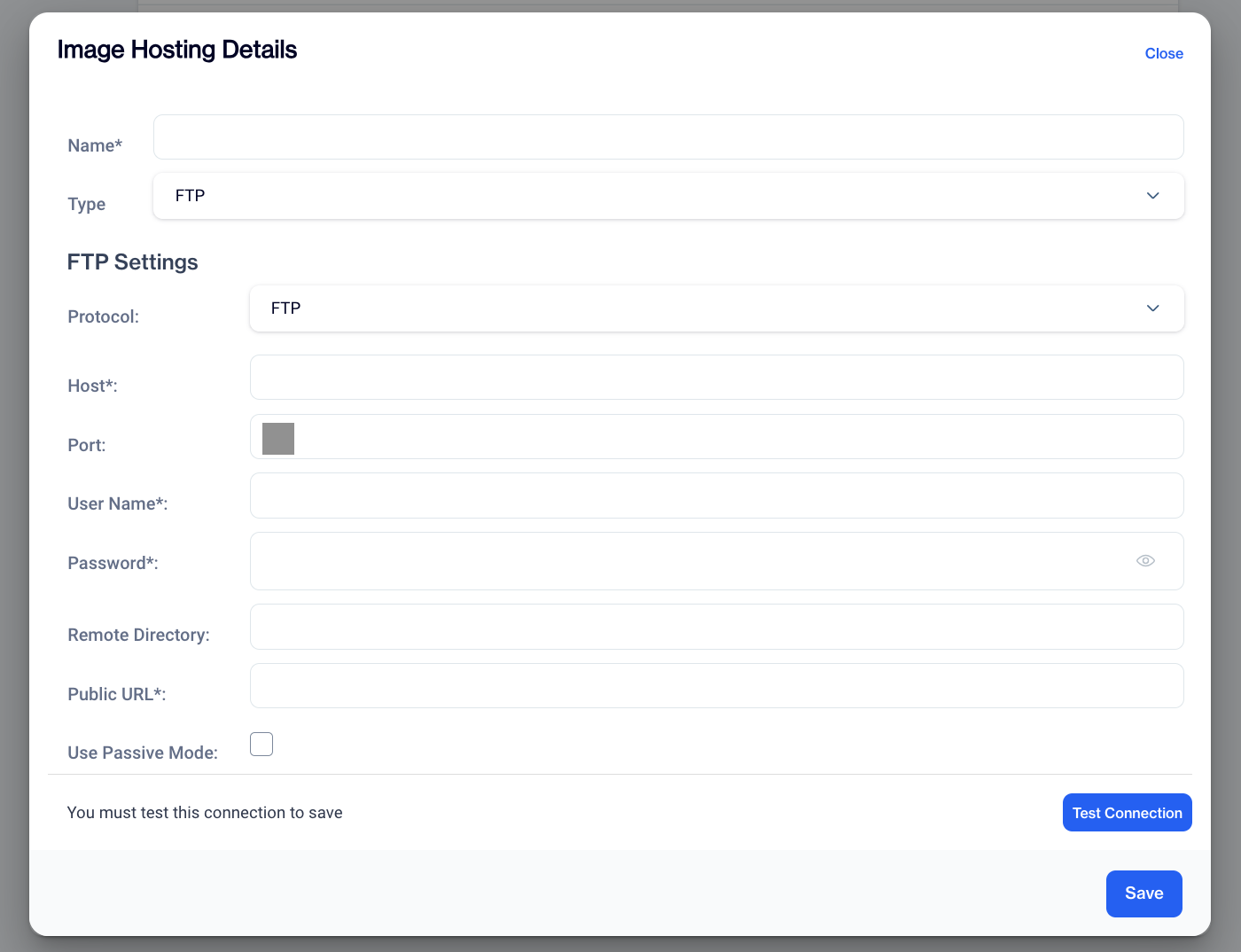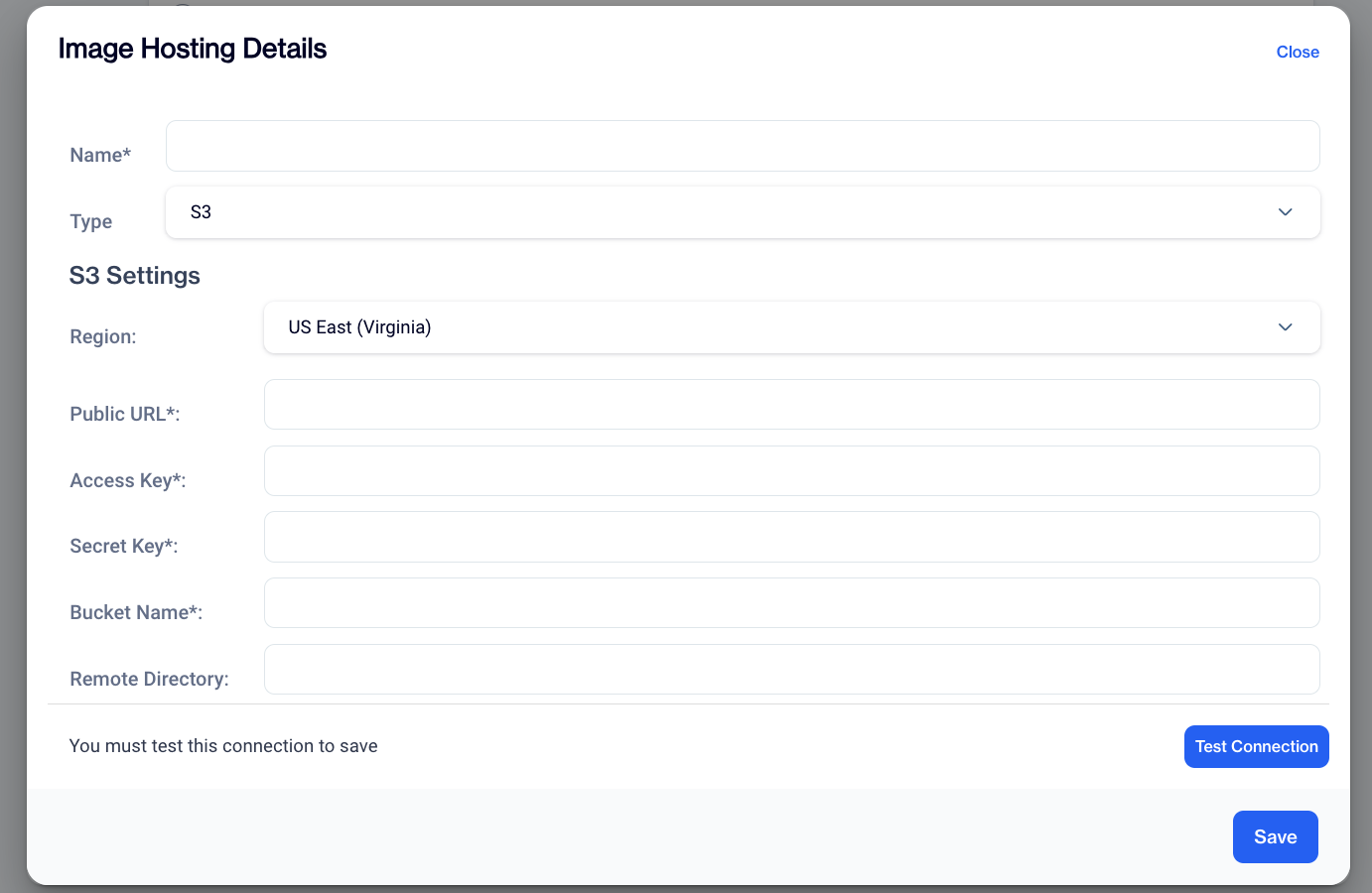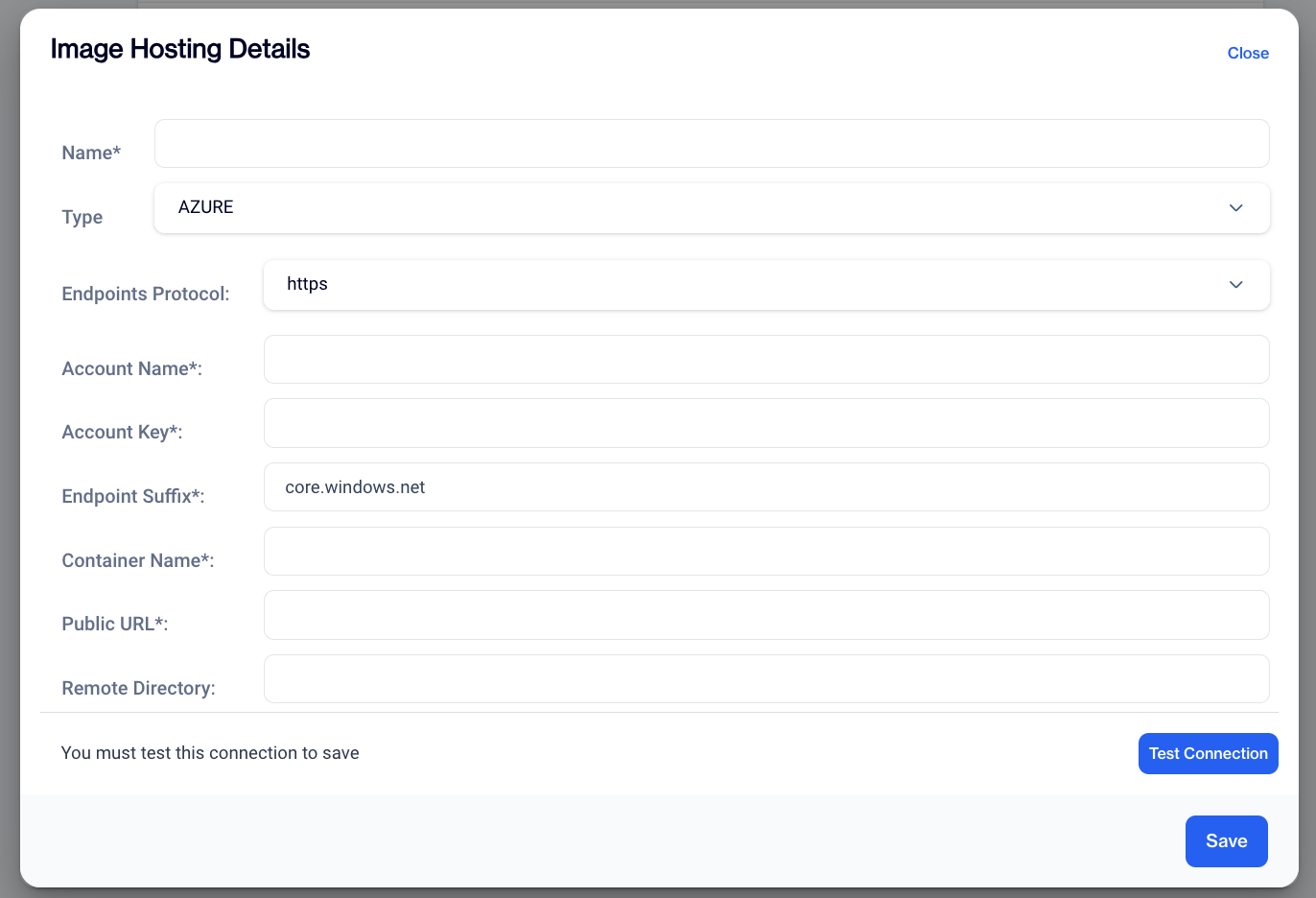Image Hosting
The Image Hosting section under settings allows you to manage the storage and serving of images used in your content. By default, the platform provides its own image hosting service. However, you can add and configure your own image hosting service to suit your requirements.
Accessing the Image Hosting Section
- Navigate to the Settings menu.
- Select Image Hosting from the options.
- You will see a list of existing image hosting configurations with columns for Default, Name, and Type.
Adding a New Image Hosting Service
If you want to use your own image hosting service:
-
Click the Add button on the Image Hosting screen.
-
The Image Hosting Details page will open.
-
Enter the following details:
-
Name: Specify a name for your hosting service.
-
Type: Select one of the following hosting types from the dropdown menu:
- FTP
- S3
- Azure

Image Hosting Details
-
Configuring Hosting Details
1. FTP Settings

FTP Settings
If you select FTP as the hosting type, provide the following details:
- Protocol: Choose FTP.
- Host: Enter the server address.
- Port: Specify the port number.
- User Name: Enter your FTP username.
- Password: Enter your FTP password.
- Remote Directory: Specify the directory where images will be stored.
- Public URL: Enter the URL used to access the stored images.
- Use Passive Mode: Enable or disable passive mode for FTP connection.
2. S3 Settings

S3 Settings
If you select S3 as the hosting type, provide the following details:
- Region: Select the appropriate region (e.g., US East[Virginia]).
- Public URL: Enter the URL used to access the images.
- Access Key: Enter your S3 access key.
- Secret Key: Enter your S3 secret key.
- Bucket Name: Specify the bucket where images will be stored.
- Remote Directory: Indicate the specific directory within the bucket.
3. Azure Settings

Azure Settings
If you select Azure as the hosting type, provide the following details:
- Endpoints Protocol: Choose https.
- Account Name: Enter your Azure account name.
- Account Key: Enter your Azure account key.
- Endpoint Suffix: Specify the suffix for the Azure endpoint.
- Container Name: Enter the name of the container for storing images.
- Public URL: Provide the URL used to access the images.
- Remote Directory: Specify the directory within the container.
Using Hosted Images
Once the image hosting is configured:
- You can upload images and manage settings from this section.
- The hosted images can be used across your content, and their URLs can be retrieved for embedding.
Note: The drag-and-drop editor does not currently support this feature.
Updated 2 days ago